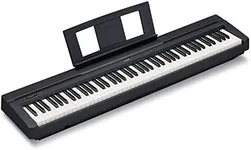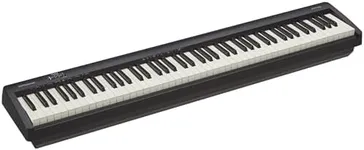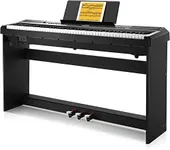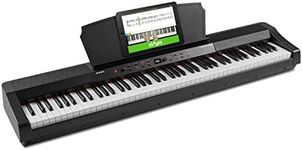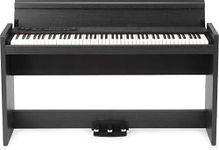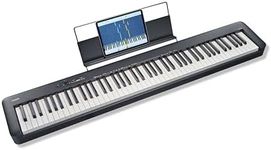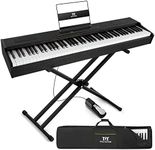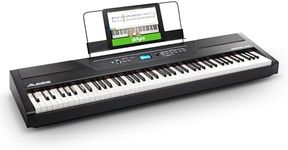Buying Guide for the Best Weighted Piano Keyboard
Choosing the right weighted piano keyboard can significantly impact your playing experience, whether you're a beginner or an experienced pianist. Weighted keys are designed to mimic the feel of an acoustic piano, providing resistance and a more authentic touch. When selecting a weighted piano keyboard, consider the key specifications that will best suit your playing style, skill level, and intended use. Understanding these specifications will help you make an informed decision and ensure that your keyboard meets your musical needs.Key WeightingKey weighting refers to the resistance you feel when pressing the keys, which is designed to replicate the feel of an acoustic piano. This is important because it helps develop finger strength and technique, making the transition to an acoustic piano smoother. Key weighting can be divided into three main categories: fully weighted, semi-weighted, and unweighted. Fully weighted keys offer the most resistance and are closest to an acoustic piano feel, ideal for serious pianists or those planning to transition to an acoustic piano. Semi-weighted keys provide some resistance but are lighter, suitable for beginners or those who prefer a lighter touch. Unweighted keys, often found in synthesizers, are the lightest and best for those who prioritize portability or are not focused on traditional piano playing.
Number of KeysThe number of keys on a keyboard determines the range of notes you can play. A full-sized piano has 88 keys, which is the standard for classical and advanced piano music. This is important for those who want to play a wide range of music without limitations. Keyboards can have fewer keys, such as 61 or 76, which are more compact and portable. If you're a beginner or have limited space, a 61-key keyboard might be sufficient for learning and playing most popular music. However, if you plan to play more complex pieces or classical music, consider a keyboard with 76 or 88 keys to ensure you have the full range of notes available.
Touch SensitivityTouch sensitivity refers to how the keyboard responds to the force with which you press the keys, affecting the volume and tone of the sound produced. This is important for expressive playing, as it allows for dynamic control similar to an acoustic piano. Touch sensitivity can vary, with some keyboards offering adjustable settings to suit different playing styles. If you are a beginner, a keyboard with basic touch sensitivity might be sufficient. However, if you are an intermediate or advanced player, or if you want to develop expressive playing skills, look for a keyboard with adjustable touch sensitivity to better match your playing style.
Sound QualitySound quality is determined by the samples and speakers used in the keyboard, affecting how realistic and pleasing the sound is. This is crucial for an enjoyable playing experience and for developing a good ear for music. Sound quality can vary widely, with some keyboards offering high-quality samples from renowned acoustic pianos. If sound quality is a priority, look for keyboards with high-quality samples and good speakers. For practice purposes, a keyboard with decent sound quality might suffice, but for performance or recording, invest in a keyboard with superior sound quality to ensure your music sounds its best.
PolyphonyPolyphony refers to the number of notes a keyboard can produce at once. This is important for playing complex pieces, using sustain pedals, or layering sounds. Polyphony can range from 32 to 256 notes or more. For beginners, a lower polyphony count might be adequate, as simpler pieces do not require many simultaneous notes. However, for more advanced players or those interested in using sustain pedals and layering sounds, a higher polyphony count is essential to avoid notes cutting off unexpectedly. Consider your playing style and the complexity of the music you intend to play when choosing the right polyphony level.
